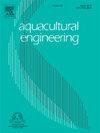Design and testing of the clam vibration harvester's V-shaped double-spiral harvesting roller brush based on DEM-MBD
IF 4.3
2区 农林科学
Q2 AGRICULTURAL ENGINEERING
引用次数: 0
Abstract
To address the challenges of low mechanization and the lack of theoretical research in clam harvesting on Chinese mudflats, a brush-screen cooperative clam vibration harvester was developed, and the V-shaped double-spiral harvesting roller brush served as the key component. White clams (Mactra veneriformis) were selected as the research subjects. A theoretical analysis of the harvesting roller brush was conducted, resulting in the derivation of key structural and operational parameter ranges. The Discrete Element Method (DEM) combined with Multi-Body Dynamics (MBD) was employed to simulate single-factor tests, Plackett-Burman tests, and response surface tests in shellfish harvesting. The optimal combination of key structural and operational parameters for the harvesting roller brush was identified as follows: bristle length of 105 mm, 5 bristle rows, bristle thickness of 40 mm, spiral angle of 28°, rotation speed of 48 r/min, and installation positions at X-axis 249 mm and Y-axis 9 mm. Under these conditions, the average mass of residual sediments on the screen surface was 10.59 g, the harvested shellfish mass was 177.4 g, and the shellfish breakage rate was 11.10 %. A prototype shellfish harvester was developed, and field tests demonstrated a harvested shellfish mass of 166.2 g, with a relative error of 8.57 %, a shellfish breakage rate of 7.07 %, an absolute breakage rate error of 4.03 %, and a harvesting efficiency of 292.20 kg/h. This study offers a valuable reference for the design and enhancement of mechanized harvesting for shellfish in mudflats.
基于DEM-MBD的蛤蜊振动收割机v形双螺旋收获辊刷设计与试验
针对我国滩涂蛤蜊收获机械化程度低、理论研究不足的问题,研制了以v型双螺旋收获辊刷为关键部件的刷筛协同蛤蜊振动收获机。选取白蛤(Mactra veneriformis)作为研究对象。对收获辊刷进行了理论分析,推导出了收获辊刷的关键结构参数和工作参数范围。采用离散元法(DEM)与多体动力学(MBD)相结合的方法,模拟贝类捕捞过程中的单因素试验、Plackett-Burman试验和响应面试验。确定了收获辊刷的关键结构和工作参数的最佳组合为:刷毛长度105 mm,刷毛排5排,刷毛厚度40 mm,螺旋角28°,转速48 r/min,安装位置分别为x轴249 mm和y轴9 mm。在此条件下,筛面残留沉积物平均质量为10.59 g,收获贝类质量为177.4 g,贝类破碎率为11.10 %。研制了贝类收获机样机,现场试验表明,收获的贝类质量为166.2 g,相对误差为8.57 %,破碎率为7.07 %,绝对破碎率误差为4.03 %,收获效率为292.20 kg/h。本研究为滩涂贝类机械化捕捞的设计和改进提供了有价值的参考。
本文章由计算机程序翻译,如有差异,请以英文原文为准。
求助全文
约1分钟内获得全文
求助全文
来源期刊

Aquacultural Engineering
农林科学-农业工程
CiteScore
8.60
自引率
10.00%
发文量
63
审稿时长
>24 weeks
期刊介绍:
Aquacultural Engineering is concerned with the design and development of effective aquacultural systems for marine and freshwater facilities. The journal aims to apply the knowledge gained from basic research which potentially can be translated into commercial operations.
Problems of scale-up and application of research data involve many parameters, both physical and biological, making it difficult to anticipate the interaction between the unit processes and the cultured animals. Aquacultural Engineering aims to develop this bioengineering interface for aquaculture and welcomes contributions in the following areas:
– Engineering and design of aquaculture facilities
– Engineering-based research studies
– Construction experience and techniques
– In-service experience, commissioning, operation
– Materials selection and their uses
– Quantification of biological data and constraints
 求助内容:
求助内容: 应助结果提醒方式:
应助结果提醒方式:


